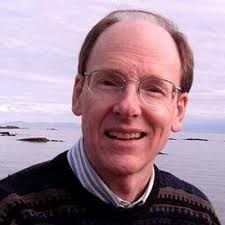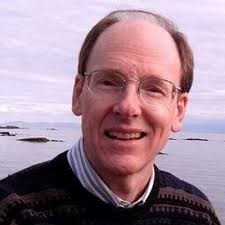I have had a passion for creating āpositive changeā for over 40 years. It began with my love of nature, and a desire to contribute to taking care of it in some way. That led me into environmental work and the field of waste reduction/recycling, as a larger way of āmaking a difference.ā
After working there for over five years, a series of intuitive experiences prompted me to leave the field and explore new areas. But as I left, two questions were uppermost in my mind:Ā Why are there so many problems in the world? And how do we get to the roots of them?Ā I also had a sobering realization. Having experienced extensive conflict in those years with other environmentalists, government and business, I had the thought: If we are the ones who are supposed to heal the planet, it aināt going to happen.
About 12 years later, I was working with the executive director of one of this countryās Round Tables on Environment and Economy. At the end of a long day, we were talking about the challenges facing the world, and I asked him if he thought what we were doing would be enough. He paused thoughtfully and said, āProbably not.ā
āThen what do you think it will take?ā I asked.
āProbably a change in consciousness,ā he replied. His answer surprised me. I had come to the same conclusion myself, but didnāt expect him to say it. So now I had a third question: What will create that shift?
For the past several decades, I have been exploring answers to these three questions. My journey has led me to work in fields as diverse as stress management, conscious business, hazardous materials management, healthy, sustainable communities, leadership, addictions and ghostwriting. Iāve also delved deeply into spirituality, healing of self and relationships, consciousness change and energy healing. Iāve volunteered in politics and hospice care, created international peace events and helped people with dementia. Yet through it all, my underlying intention has been the same. And finally, in the last few years, insights as to how we might practically answer these questions have started to take shape.
Three Key Ideas
For me, three ideas stand out as being at the core of understanding change differently. They are:
1) What is driving our behaviours is the consciousness behind them: our thoughts, feelings, fears, beliefs and mindset.
2) At the root of human nature, there is a split or conflict inside of us.
3) Most of the change we try to create in our lives is shaped by this conflict within.
Huh? Say what?Ā These ideas might sound surprising, perhaps even meaningless. Theyāre definitely not the traditional āproblem solvingā answers we usually talk about. Yet considering the number, size and intractable nature of the many problems we experience in our world, I believe we need to āthink differentlyā in order to solve them.
Remember the 1997 Ā about innovators? āHereās to the crazy ones... the ones who see things differently.ā Thatās the direction we will need to head. So letās consider how we might use these ideas to bring about change more effectively.
Changing Behaviour
When I started in the environmental field, my focus was on fixing problems ā like pollution ā on a technical level. Coming from a maths and science background, thatās what made sense to me. Over time, my interest shifted to the root causes of problems. I began to focus on how we can change our behaviour and choices, as a way of preventing problems before they occur.
Societally, we have gone through a similar shift. Forty years ago, our main focus for environmental improvement was on āend of pipeā solutions to capture and treat wastes. Now, ābehaviour changeā has become one of our primary approaches, not just with the environment, but across many fields. Examples of this include: giving companies incentives to stop polluting; encouraging consumers to buy differently; motivating people to reduce their carbon footprint; encouraging people to become healthier by eating less, smoking less, exercising more, and so on.
What we often forget, however, is that ābehaviourā doesnāt come out of thin air. It is itself a symptom or expression of something deeper: our thoughts, feelings, beliefs and values. These are what lead us to do what we do, and to change or not to change. Therefore, if we really want to learn how to shift behaviour, we need to better understand what makes us tick.
Hereās just one example. Most of us think of ourselves as ārationalā beings, making decisions based on good information and evidence. We believe that other people, when given the right facts or information, will make logical, rational decisions as well. Yet decades ago, Madison Avenue ad agencies recognized that emotions are also core motivators of behaviour. Thatās why advertising became the driving force behind our mass consumption age, and why more recently social marketing has become an important tool for societal change. In other words, understanding human motivation became an important part of how we make change.
Now letās go a step even deeper than that, and look at what guides our fundamental thinking.Ģż
A Split Within Us
Everyone has seen and experienced the āgood & badā sides of being human. Weāve all had good ideas and intentions about how weād like to improve our lives, then failed to act on them. (Beware the upcoming New Yearsā resolutions!) Most of us have loved someone deeply, then lashed out and hurt them when weāve felt hurt ourselves. And we all have deeply-held values that, for some reason, we donāt live on a daily basis.
Weāve also seen the same in others. Well-intentioned people who say one thing and do another. Or those who makes āhigh promises,ā but fail to act on them. We know people who value kindness, caring and compassion, yet act with hostility or hatred towards those who disagree with them. And āgood peopleā who resort to bullying, verbal attacks or lying to get their own way.
So what is this split all about? In popular culture, the Star Wars series referred to it as our light and dark sides. In modern psychology, itās been called the conflict between our āfalse selfā and ātrue selfā (D.W. Winnicott). Others today use terms like our enlightened self and our ego or shadow side. Yet these concepts are far from new. In the 1860s, Abraham Lincoln spoke about the ābetter angels of our nature.ā In the 1500s, Christopher Marlow wrote about it as our āgood and bad angelsā (Doctor Faustus). Centuries before that, Judeo-Christian thinkers wrote about the conflict between good and evil, or Spirit/the Christ and Satan/the devil. And ancient Buddhist teachings refer to the ādefiled mindā and the āluminous mind.ā
Normally, we just accept this āsplit inside of usā as part of who we are. We call it āhuman natureā and then donāt give it a second thought. But if we really want to get at the roots of what creates ānegativeā behaviour and āpositiveā change, perhaps we need to look more deeply at these two sides of being human, and see how they operate in specific ways each and every day ā in others, and in ourselves.
Coming Saturday:Ā Understanding Human Nature and the Split Within Us ā Part 2
 Eric HellmanĀ is a communications and change coach in Vancouver. His current work is called āconscious change.ā For more about it, go to or email him atĀ [email protected].Ģż
Eric HellmanĀ is a communications and change coach in Vancouver. His current work is called āconscious change.ā For more about it, go to or email him atĀ [email protected].Ģż
You can read more articles on our interfaith blog, The Spiritual View,


